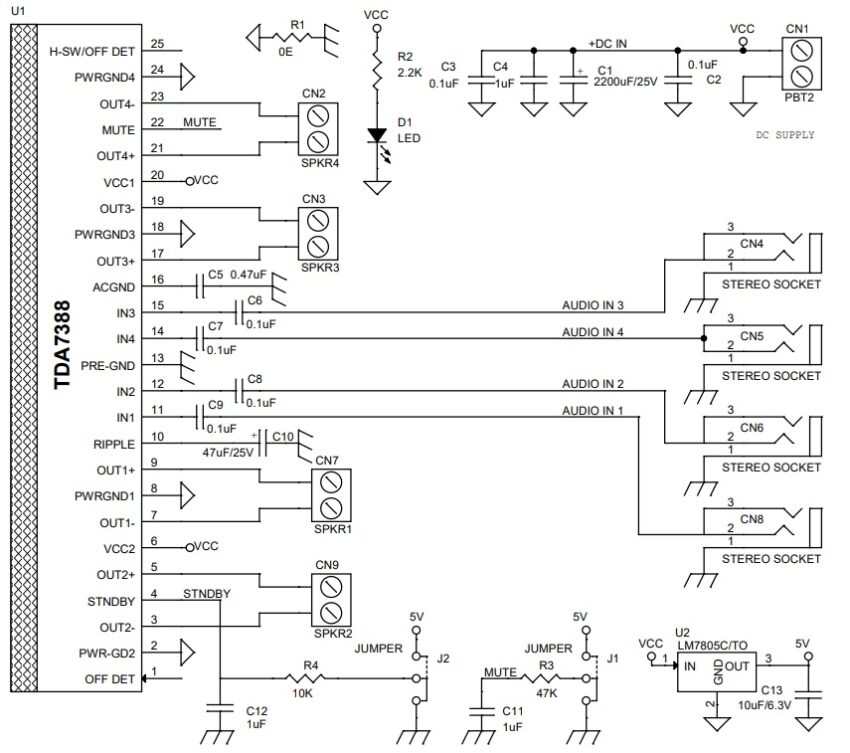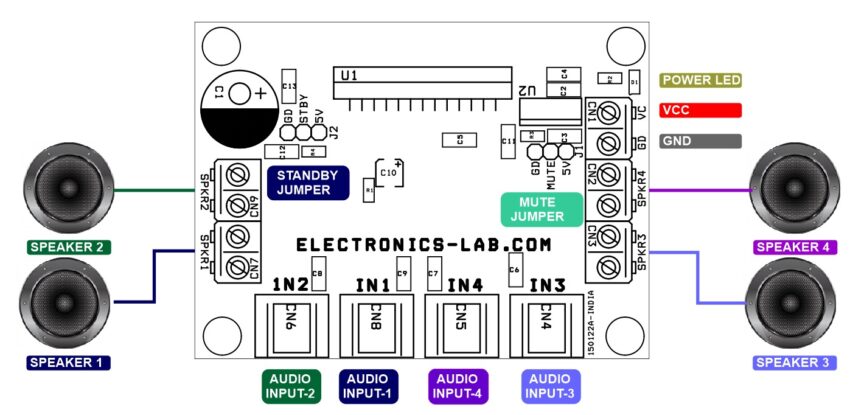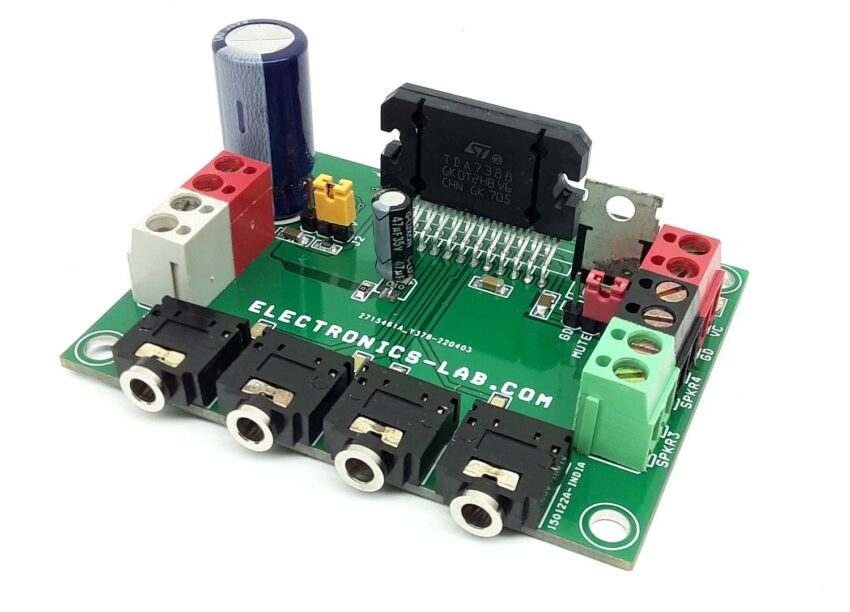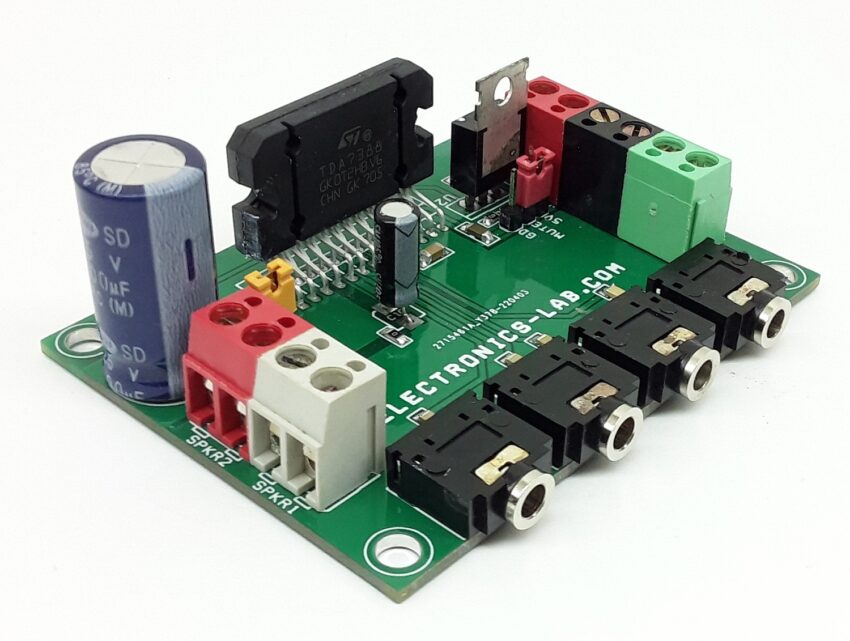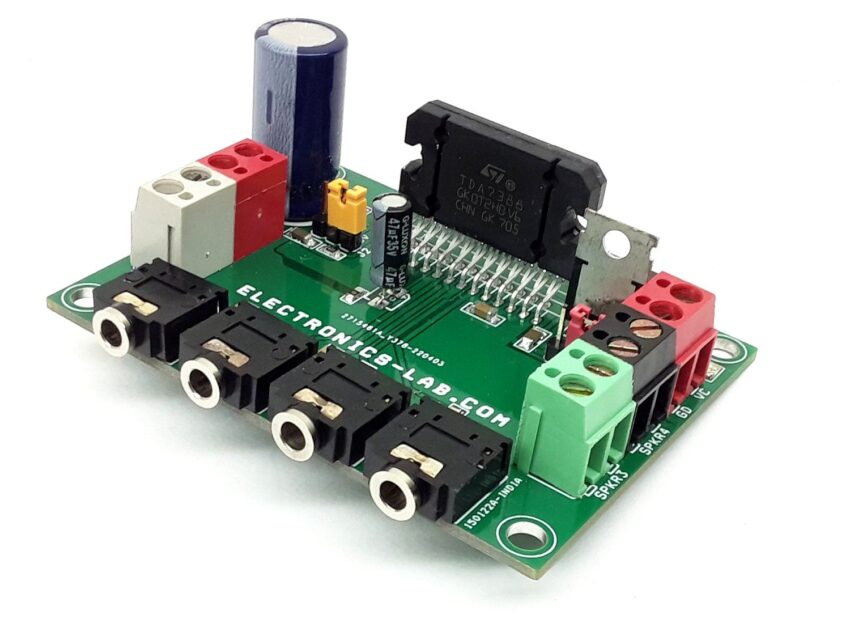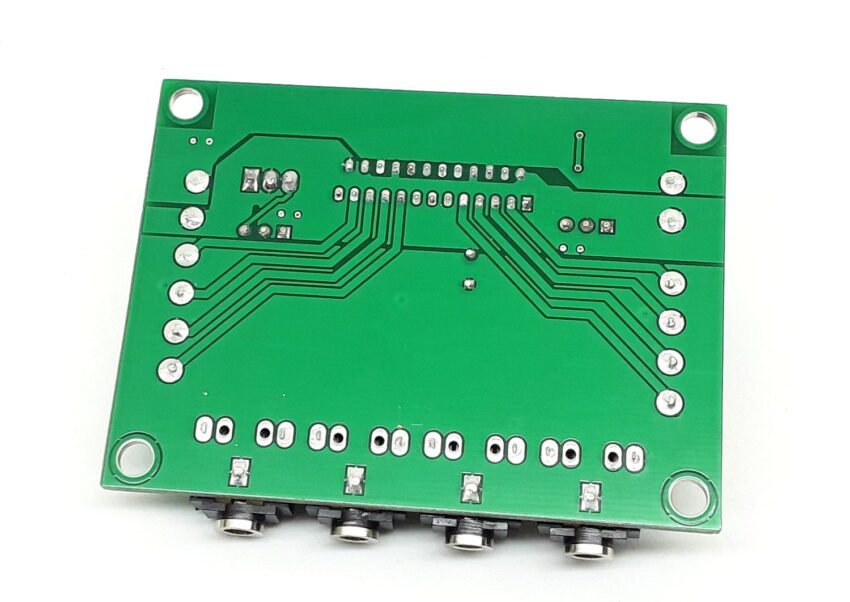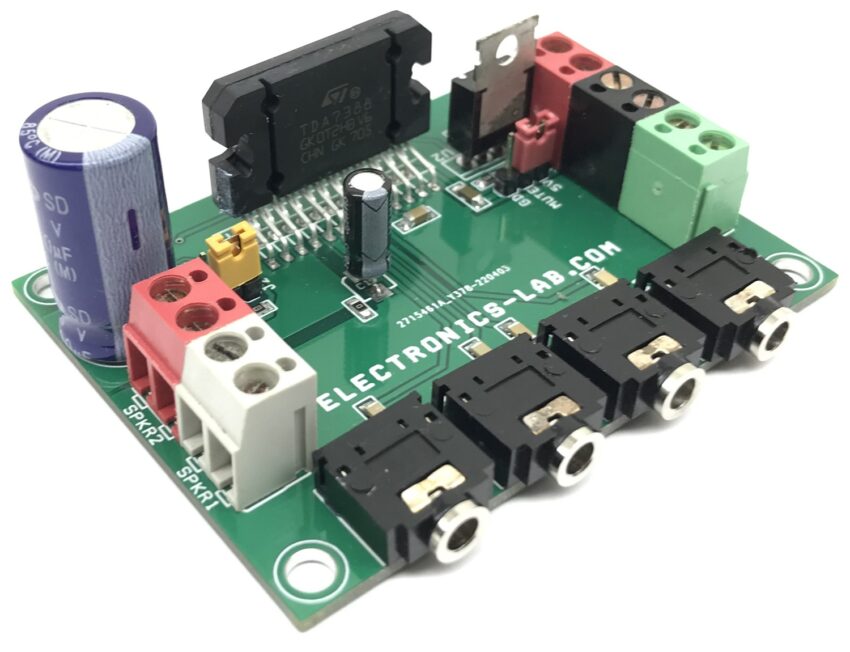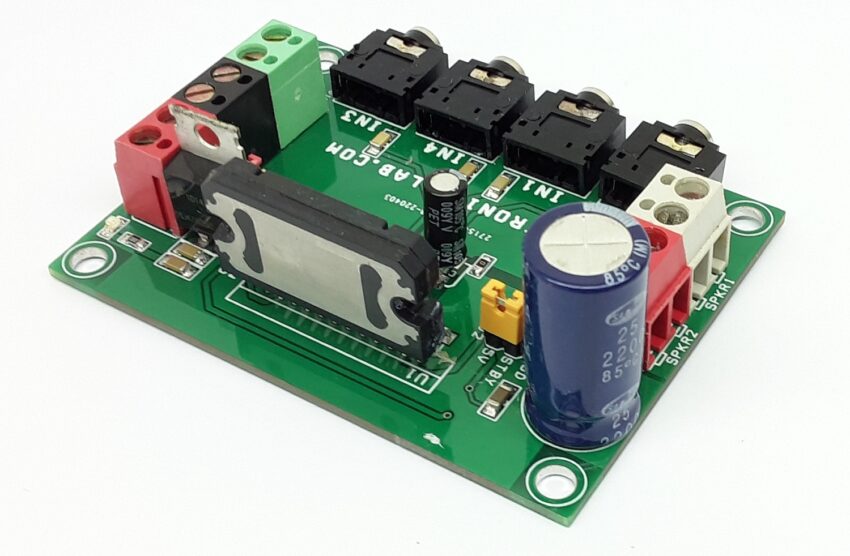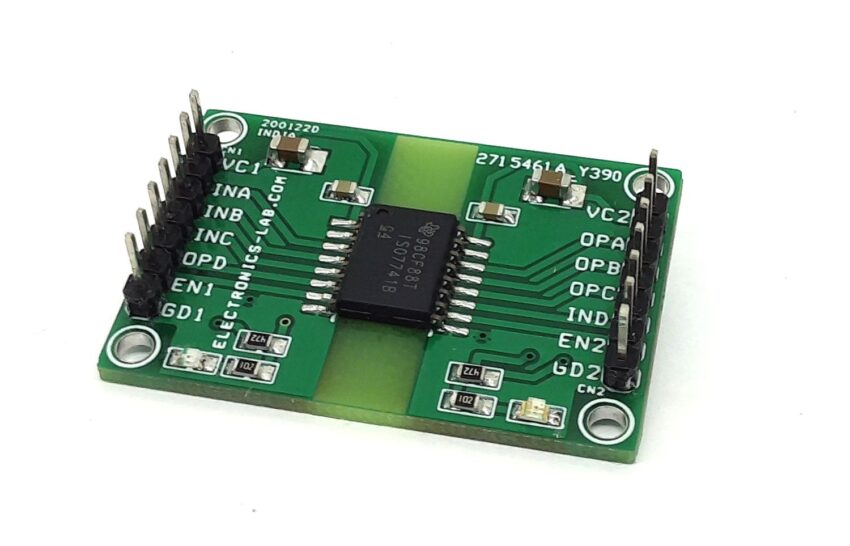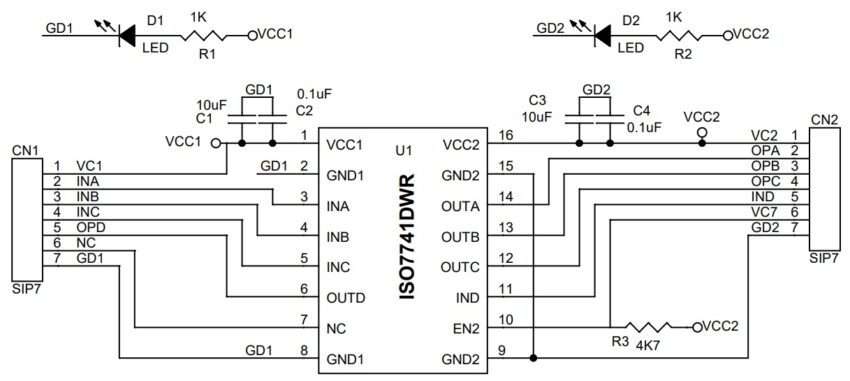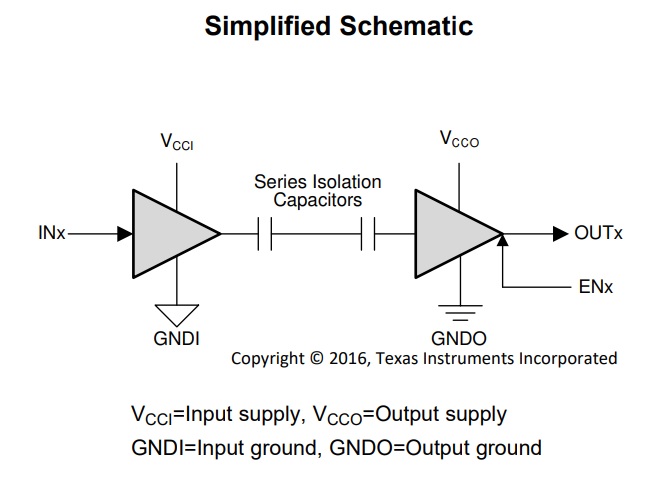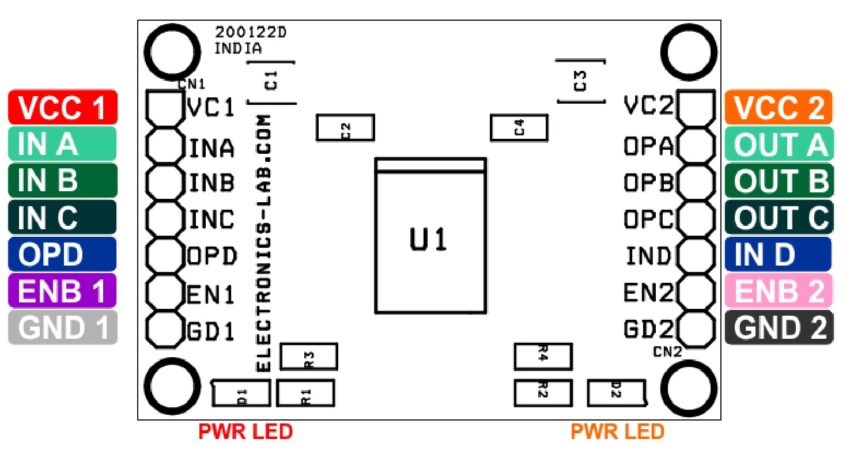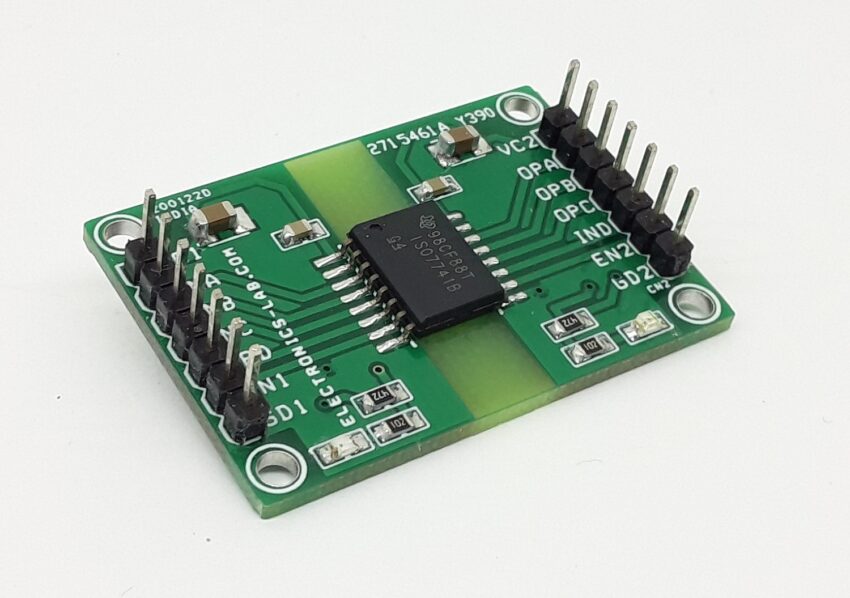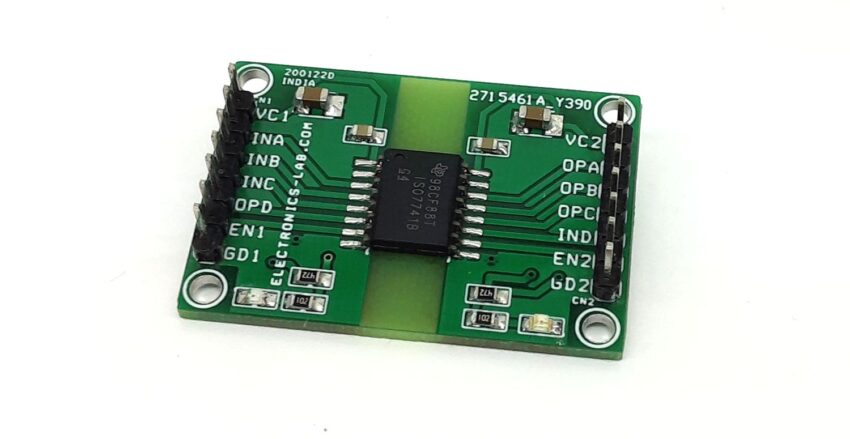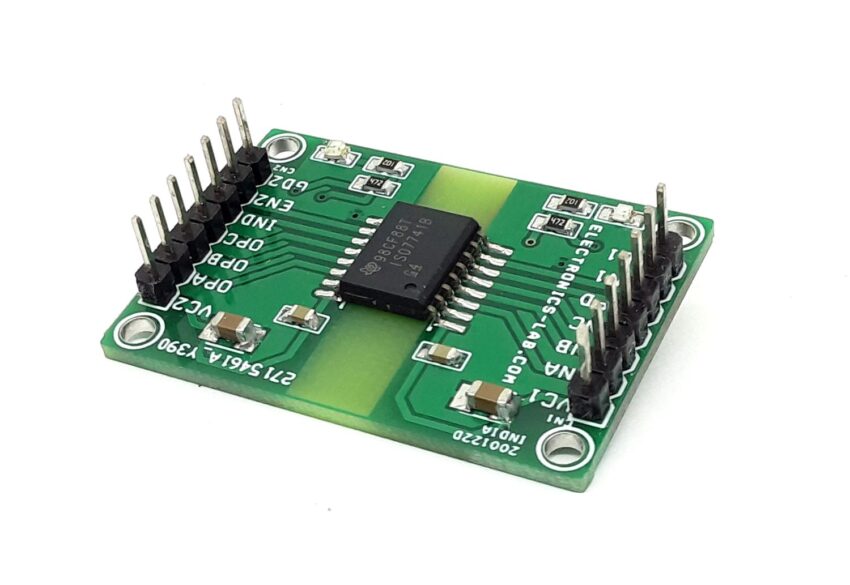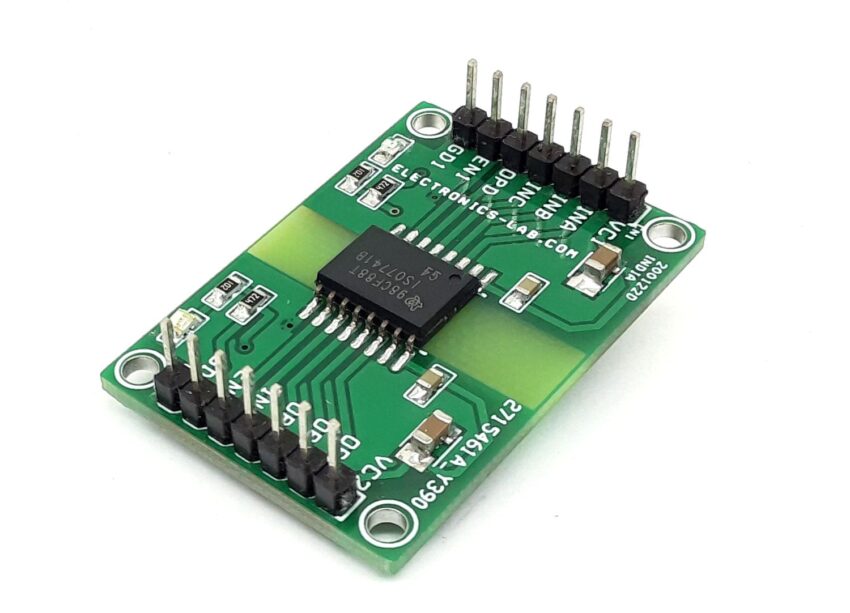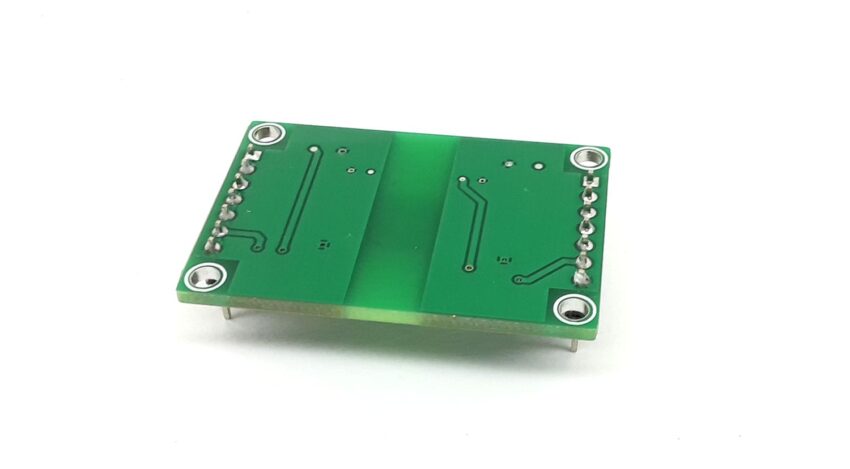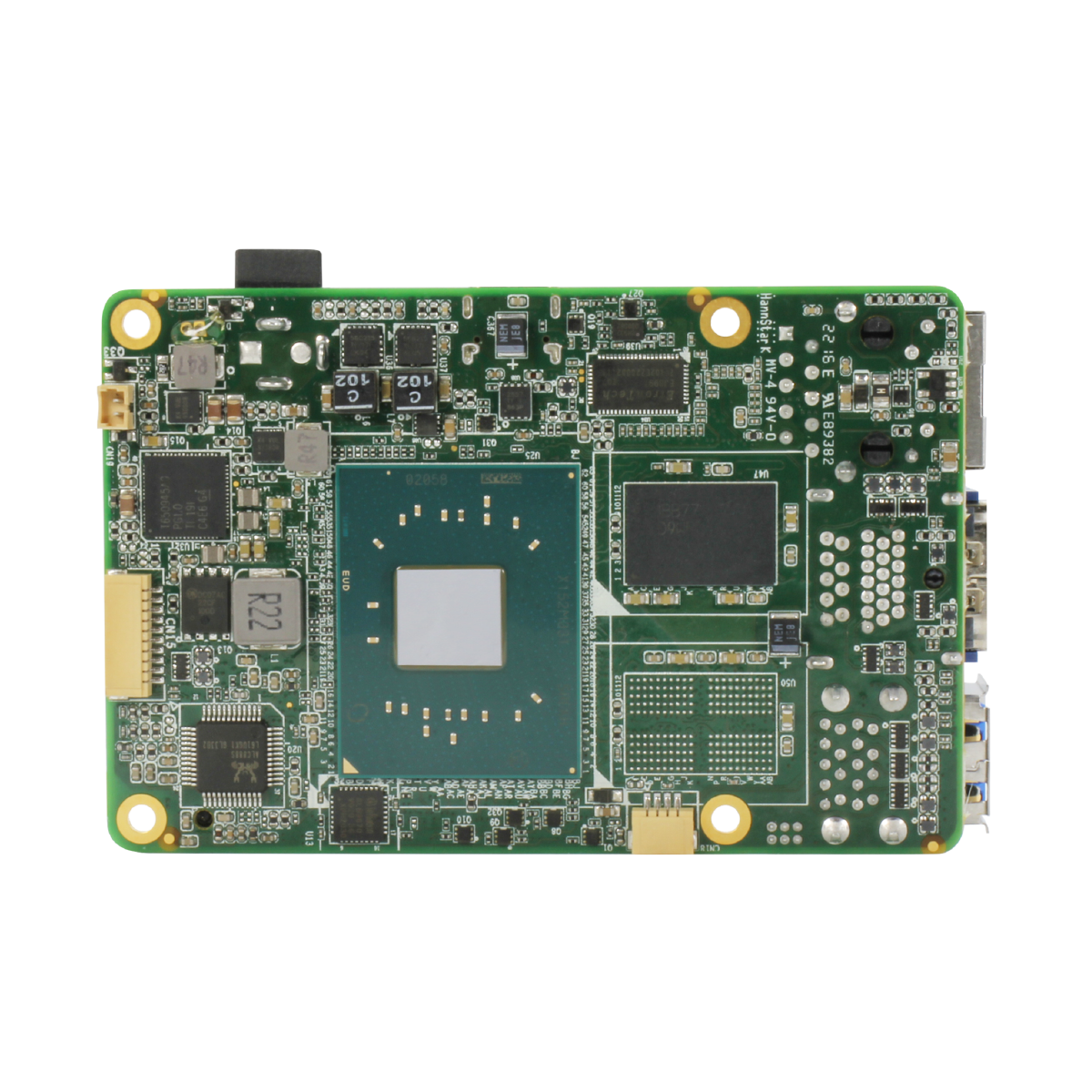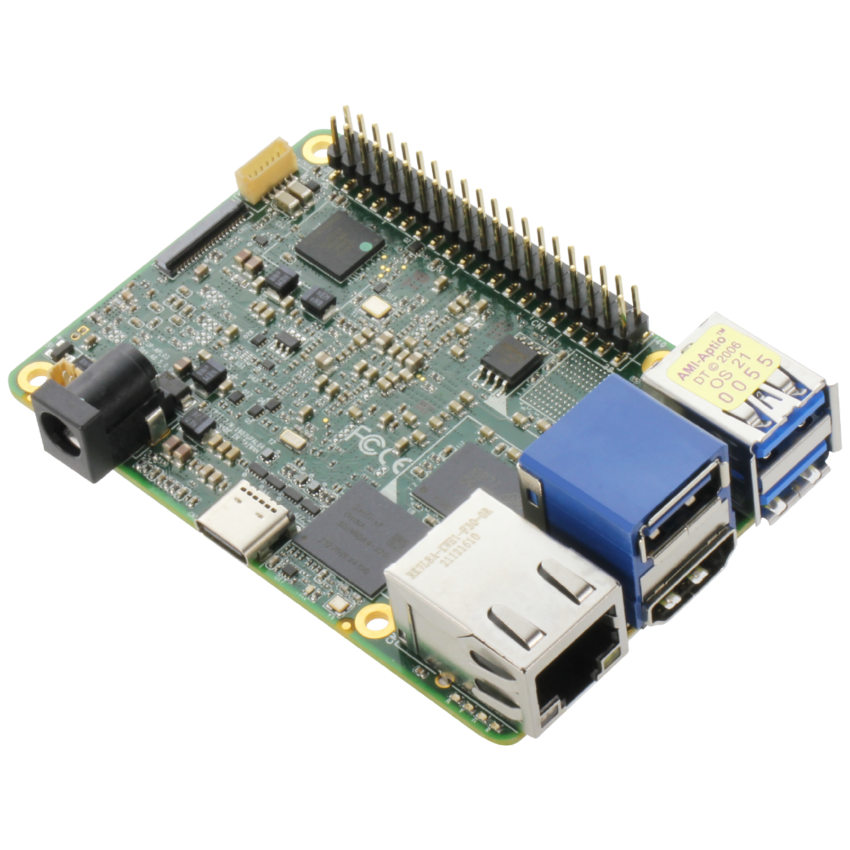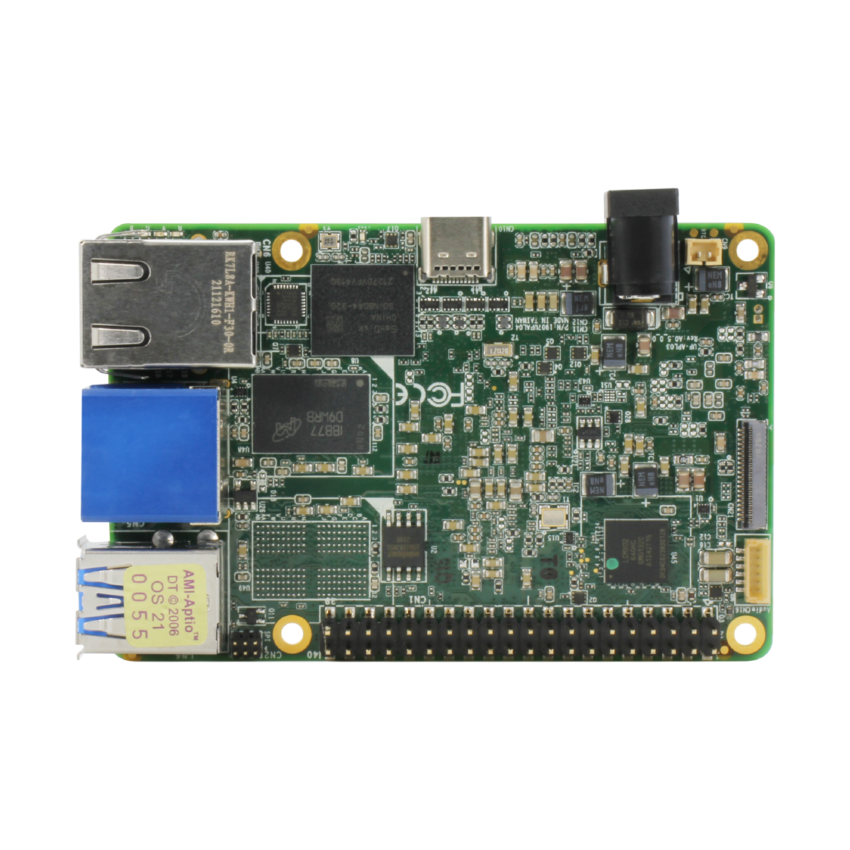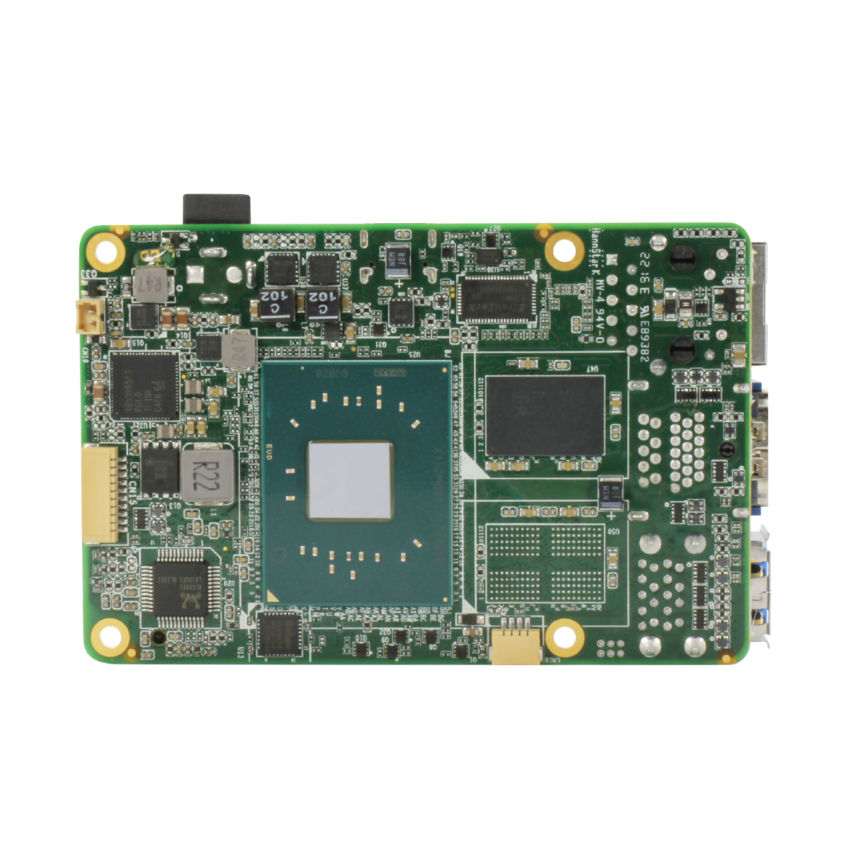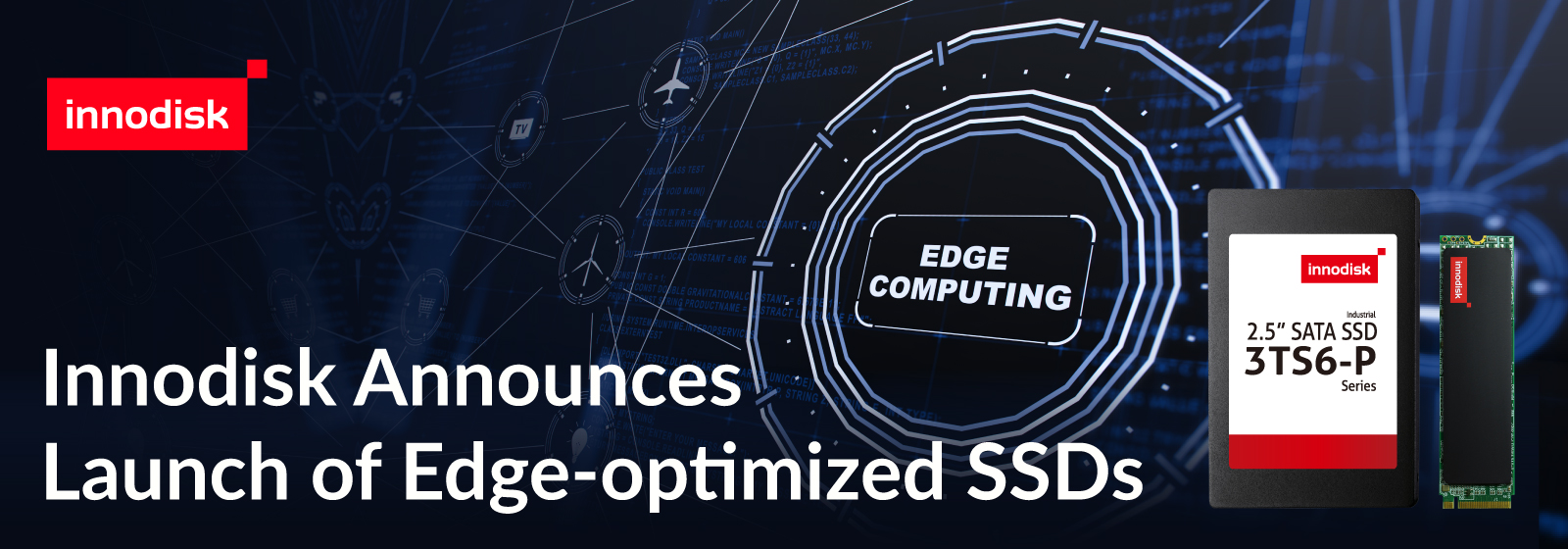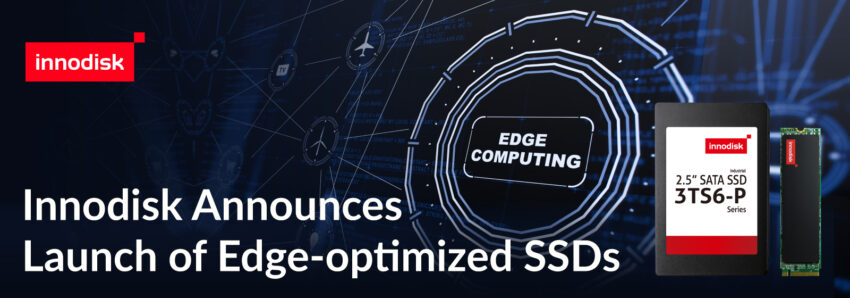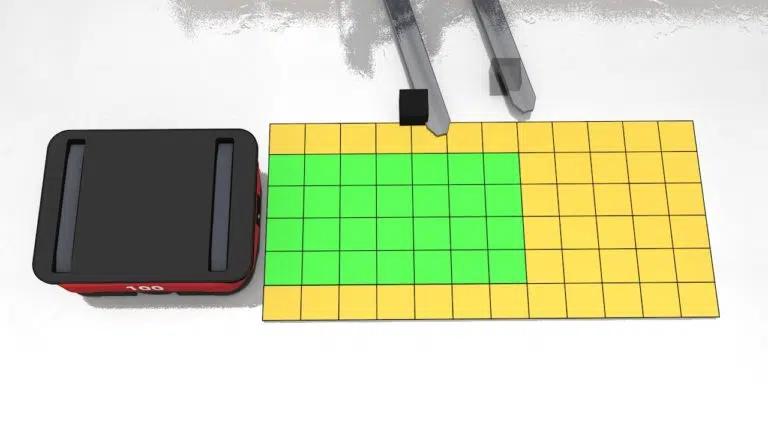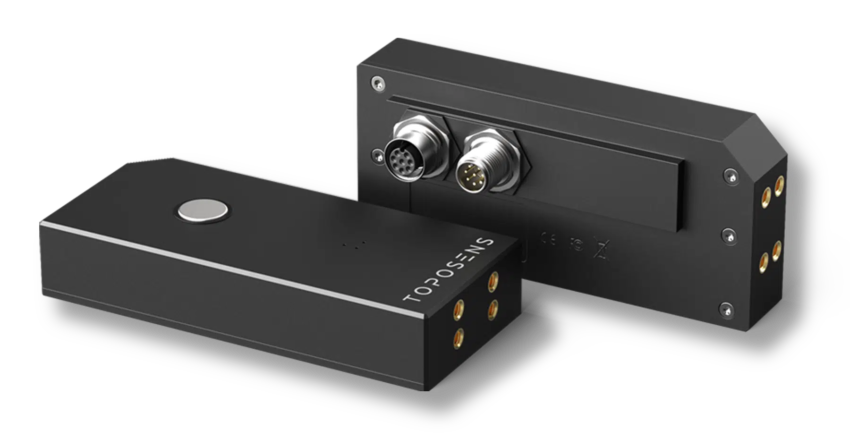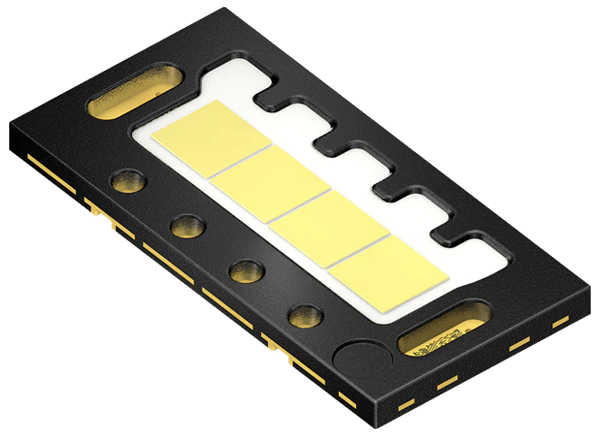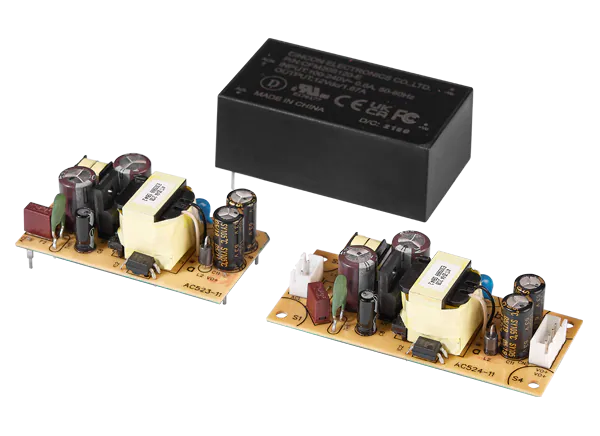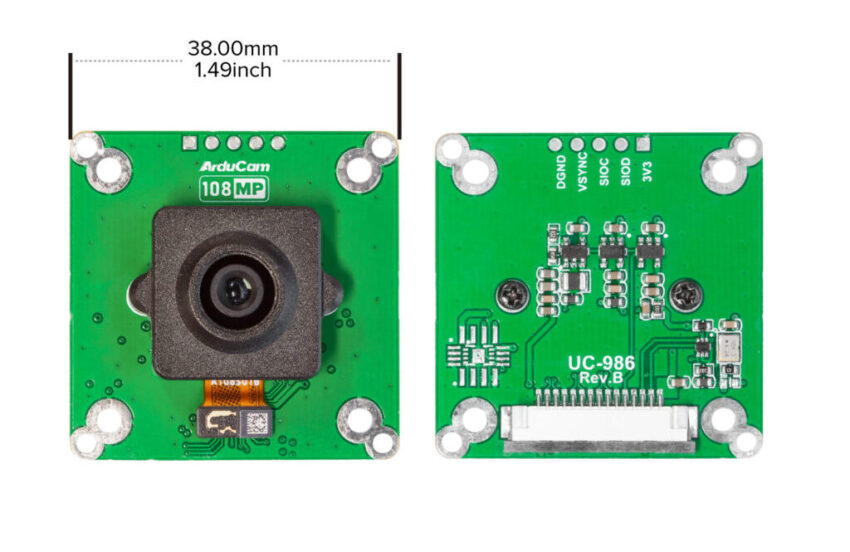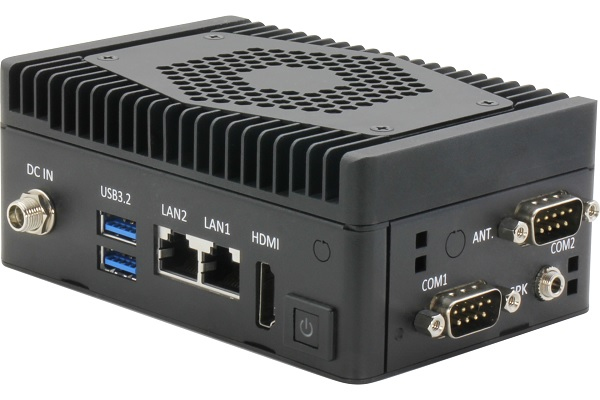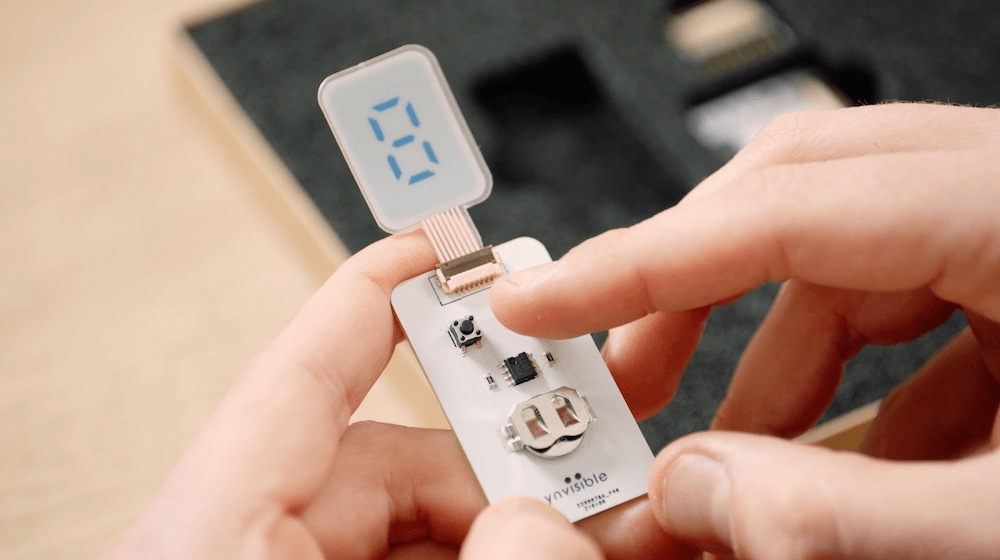This is an AB class audio amplifier based on the TDA7388 chip and it is a great choice for car audio applications. This compact board has 4 channels each 26W with 4 ohms speaker. Then IC consists of a fully complementary PNP/NPN configuration and the TDA7388 allows a rail-to-rail output voltage swing with no need for bootstrap capacitors. The extremely reduced boundary components count allows very compact sets. The TDA7388’s inputs are ground-compatible and can stand very high input signals (±8 Vpk) without any performance degradation. The standard value for the input capacitors (0.1 µF) is adopted, and the low-frequency cut-off amount to 16 Hz. 4 x 3.5 mm stereo EP socket helps to feed audio signals, and the onboard screw terminal makes life easy for speaker connections, and the power supply input. Onboard jumpers are provided to select the standby and mute function. D1 indicates power present. Mounting a proper heatsink is very important for chip health.
Features
- Power Supply 12V DC to 15V DC
- 4 x 45 W / 4 Ω max.
- 4 x 26 W / 4 Ω @ 14.4 V, 1 kHz, 10 %
- Low distortion
- Low output noise
- Frequency Response 20Hz to 20 Khz
- Standby function – On Board Jumper
- Mute function – On Board Jumper
- Automate at min. supply voltage detection
- Low external component count:
- Internally fixed gain (26 dB)
- No external compensation
- No bootstrap capacitors
- Standby Current 100uA (Chip)
- 4 x 3 mm Mounting Holes
- PCB Dimensions 73.82 x 55.09 mm
Protections
- Output short circuit to GND, to VCC, across the load
- Very inductive loads
- Overrating chip temperature with soft thermal limiter
- Load dump voltage
- Fortuitous open GND
- Reversed battery
Connections and Other Details
- CN1: DC Supply Input Pin1 = VCC, Pin2 GND
- CN2: Speaker 4, CN3: Speaker 3, CN7: Speaker 1, CN9: Speaker 2
- CN4: Audio Signal Input 3
- CN5: Audio Signal Input 4
- CN6: Audio Signal Input 2
- CN8: Audio Signal Input 1
- D1 Power LED
- Jumper J2: Standby (GND Standby)
- Jumper J1: Mute (GND Mute)
Schematic
Parts List
| NO. | QNTY. | REF. | DESC. | MANUFACTURER | SUPPLIER | PART NO |
|---|---|---|---|---|---|---|
| 1 | 5 | CN1,CN2,CN3,CN7,CN9 | 2 PIN SCREW TERMINAL PITCH 5.08MM | PHOENIX | DIGIKEY | 277-1247-ND |
| 2 | 4 | CN4,CN5,CN6,CN8 | STEREO EP SOCKET 3.5MM FEMALE | CUI AUDIO | DIGIKEY | CP1-3525N-ND |
| 3 | 1 | C1 | 2200uF/25V ELEKTROLYTIC | NICHICON | DIGIKEY | 493-15830-ND |
| 4 | 6 | C2,C3,C6,C7,C8,C9 | 0.1uF/50V SMD SIZE 1206 | YAGEO/MURATA | DIGIKEY | |
| 5 | 3 | C4,C11,C12 | 1uF/25V SMD SIZE 1206 | YAGEO/MURATA | DIGIKEY | |
| 6 | 1 | C5 | 0.47uF/25V SMD SIZE 1206 | YAGEO/MURATA | DIGIKEY | |
| 7 | 1 | C10 | 47uF/25V ELECKTROLYTIC | NICHICON | DIGIKEY | 493-10997-1-ND |
| 8 | 1 | C13 | 10uF/6.3V SMD SIZE 1206 | YAGEO/MURATA | DIGIKEY | |
| 9 | 1 | D1 | LED-RED | LITE ON INC | DIGIKEY | 475-1278-1-ND |
| 10 | 2 | J1,J2 | 3 PIN MALE HEADER PITCH 2.54MM | WURTH | DIGIKEY | 732-5316-ND |
| 11 | 1 | R1 | 0E | YAGEO/MURATA | DIGIKEY | |
| 12 | 1 | R2 | 2.2K 5% SMD SZE 0805 | YAGEO/MURATA | DIGIKEY | |
| 13 | 1 | R3 | 47K 5% SMD SIZE 0805 | YAGEO/MURATA | DIGIKEY | |
| 14 | 1 | R4 | 10K 5% SMD SIZE 0805 | YAGEO/MURATA | DIGIKEY | |
| 15 | 1 | U1 | TDA7388 | ST | DIGIKEY | 497-11754-5-ND |
| 16 | 1 | U2 | LM7805C/TO | TI | MOUSER | 926-LM7805CT/NOPB |
| 17 | 1 | J1,J2-SHUNT | SHUNT | SULINS INC | DIGIKEY | S9001-ND |
Connections



